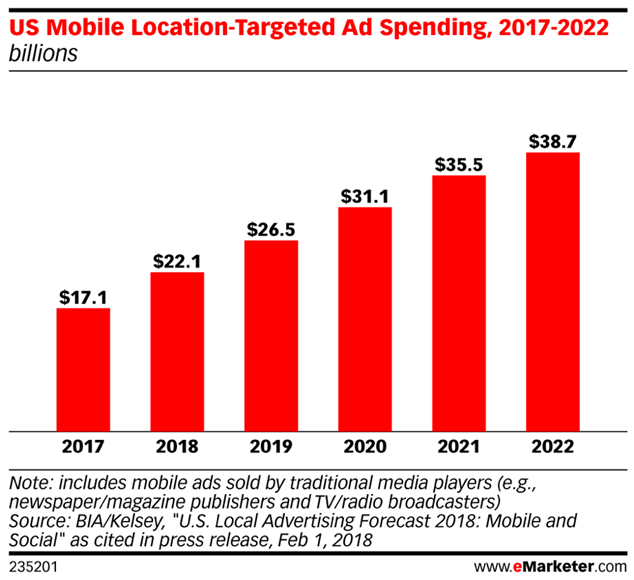Sign up for our LAVY email
and get our bi-monthly newsletter.
Programmatic media buying. It sounds complicated and perhaps mysterious, but don’t let the name fool you. It’s actually a fancy way of describing the process of using existing mobile phone technology to dynamically deliver creative ads to specific pools of people based on location—including that of your competitors.
Okay, so maybe that was still a bit jargony.
Let’s break it down one more time. Wouldn’t it be great to ping mobile devices of home buyers who are touring model homes near yours, to entice them to come on over to see yours instead?
With programmatic advertising you can do that, and so much more. Mobile phone companies already maintain aggregate data and can also detect when a device enters or leaves a preset area in real time.
 Certain apps running in the background on mobile devices allow carriers to serve ads within apps or on mobile sites based on proximity. They can do so once a specified radius known as a geo-fence is breached. They can send follow-up messages while the device is in the area and another when the device leaves. This is called geo-fencing. It works by homing in on devices as they enter within a specific radius using global positioning satellite (GPS) or Internet Protocol (IP) address.
Certain apps running in the background on mobile devices allow carriers to serve ads within apps or on mobile sites based on proximity. They can do so once a specified radius known as a geo-fence is breached. They can send follow-up messages while the device is in the area and another when the device leaves. This is called geo-fencing. It works by homing in on devices as they enter within a specific radius using global positioning satellite (GPS) or Internet Protocol (IP) address.
Through data management platforms, programmatic media buyers place bids on ads that can be accurately pinpointed within four feet everywhere your home buyers have visited. This means you can learn which models they toured and which ones they skipped. You can learn whether they visited someone else’s community before yours and if they stopped at a competitor’s sales office after leaving yours.
In addition, you can target based on visitors who have visited a location in the past. They keep the data for at least a year, meaning you can reach those who have even thought about buying homes seriously enough to visit residential developments within the past few months or more.
If you do the latter, you’ll actually be using a mix of geo-targeting and geo-fencing. Geo-targeted ads are served dynamically to mobile users based on where they are both physically and on the web. The ads take into account income level, age, behavior and other factors which contribute to whether recipients would be a qualified lead, instead of being activated by entering or leaving a geo-fenced area.
Again, this is all done with aggregate information which gives you the ability to pinpoint a specific type of individual in a specific area with precision. It is one form of programmatic advertising.
Regardless of the exact geo method and the proper terminology, it's important to know there are effective ways to reach exactly who you want by targeting their consumer profile or the location of their device. Or you can use them together.
You’ve got to love big data and digital technology.
Ready to get started? Let’s take a look at how to use geo-fencing to lure serious buyers right out of the sales offices of your competitors.
Do you know who is building homes nearby which are comparable to yours? It’s worth taking the time to identify who they are and where they are located so you can plan a strategic offensive marketing campaign.
Take inventory of reasons why buyers might find buying from them preferable to living in one of your communities, and then rank them in order of how valid those threats might be, real or perceived.
We suggest narrowing it down to no more than five.
Now that you know which communities post the greatest threats, it’s time to decide which ones make the cut for your geo-fencing campaign. With a little research, you can determine the traffic patterns in and around those competitors’ locations to set up virtual boundaries.
You can begin with one or go big and focus on five. It all depends on how much of an opportunity to gain exists in each location. Choose the ones likely to have the highest return and set your radius accordingly.
This is the fun part. You’ll need to decide what you’d like to say, how you’d like to say it and whether to send varying messages depending on whether they are entering, within or leaving your geo-fenced area.
For the best results, you’ll need to develop custom creative for each location and each type of trigger.
If they are visiting your site, you might welcome them as they enter, offer to answer questions while they are there and include a special offer or incentive to buy as they leave.
You could also just send them a follow-up note afterward thanking them for visiting. It’s up to you.
For geo-fences designed to track foot traffic or vehicle traffic at a competitor’s site, you’ll need to craft something enticing enough to give them a reason to turn left instead of right or to get back in their vehicle and see what you have to offer.
Your strategy could also be as subtle as sending a push notification to those visiting competitor locations letting them know your community is nearby. Use strong imagery with an equally strong message.
Or you could wait to send a message until they have finished their tour and let them know that while they are in the area, you have a special incentive for them to make another stop.
You get the idea.
Another way to customize messages is to switch creative based on the time of day. Consider adding “Good Morning,” to those who visit early in the day or sending them a note about early birds catching the worm.
If it is during a special event which includes lunch, include that in your push notification. Invite them over to enjoy a soda and a hot dog…as long as they are nearby.
The same goes for the late afternoon when you might sweeten your offer by including the promise of cookies and lemonade when they stop by to get a feel of the family lifestyle in your community (or free wine tasting with cheese on a lazy Sunday afternoon).
To be clear, you don’t have to invite a jazz player to set the mood or offer free food. But if you are doing those things anyway, letting people in the area know about it while they are out and about is a great way to boost attendance.
A later day-part message might also encourage people to come see the models in time to watch the sunset, or on their way home from their daily commute.
In any case, take a moment to think about how to leverage the time of day when your ads will deploy.
Not all programmatic campaigns include social media. If you haven’t opted into paid social before, your geo-fencing campaign is a great place to start.
Remember, with social, you can also use geo-targeting, which means you will be reaching people by more than where they are. You’ll be reaching people within specific demographics, behaviors, and preferences you’ve selected.
It can also mean that your geo-fenced messages arrive on social media in addition to other web properties.
The fact is, consumers use the internet to search for homes. They are online looking. It is to your benefit to be among those they find when they are there.
You know you want to, so do it.
Not sure where to start? You’re not alone. LAVIDGE can help you navigate the competitive media planning process needed to get started in programmatic, along with what it takes to deploy a great geo-fencing campaign.
To learn more, give us a call at 480.998.2600 or send email to info@lavidge.com.
Consumers have become more comfortable sharing location details, but in the past year, in particular, they have also become choosier about what they’re willing to share. At the same time, marketers have a better understanding of how to use location data and which data to avoid.
A clear majority of mobile users allow their devices to track their location—many of their favorite apps depend on it. But consumers shy away from sharing location information with apps that don’t give them some value in return. Younger consumers still opt into consumer tracking at high rates.
Data quality remains a problem, and the percentage of high-quality location data on exchanges has actually fallen. That said, marketers have much better tools to vet and verify data, and there are high-quality sources of data, including GPS directly from publishers and data service providers that filter out much of the poor-quality data.
To truly benefit from the use of location data, marketers must first define their advertising goals before deciding which type of location data to use.
As marketers become savvier about the sources and quality of data, their location targeting will become better.
Adapted from eMarketer.com, below are several steps to take as you set up a location-based campaign:


This article is a brief abstract of our exclusive study about home buyers and their preferences for advertising and marketing tactics used by new home builders.
Sign up for our LAVY email
and get our bi-monthly newsletter.